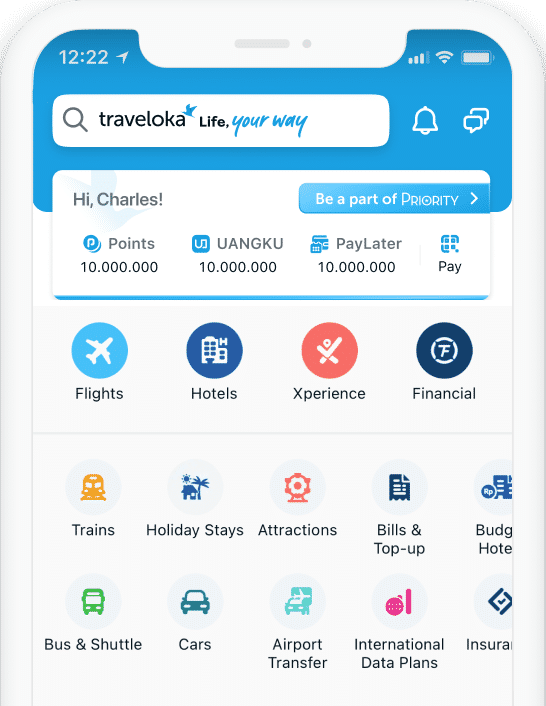
Banaue Hotels
- Hotel/
- Philippines(8505 Hotels)/
- Ifugao(9 Hotels)/
- Banaue(8 Hotels)

Why Pay More
When You Can Pay Less?

Popular Hotels in Banaue
Discover what you like
Stay near exciting spots
Plenty of options, whatever your occasion
More about Banaue
The unhurried atmosphere, cool mountain breeze, and a grand view of the world-famous Banaue Rice Terraces—these three are the telltale signs that you have reached Banaue. Aside from inspiring awe with its lovely sights and refreshing weather, this small town in Ifugao serves as a perfect hideaway for anyone who wishes to calm their senses and escape the hustle and bustle of the metro.
At A Glance

The serene ambiance of Banaue is a breath of fresh air for travelers that need to break away from the city’s sights and sounds. While primarily known as the home of the world-famous Banaue Rice Terraces, this small municipality also offers a number of museums and venues where one can learn more about the culture and traditions of the people of Cordillera. A visitor can easily book a Banaue hotel with rooms made from preserved traditional houses, then hike to a restaurant with a view of the terraces for breakfast. In addition to attracting tourists with its enchanting views, the municipality also serves as a jump off point for visiting other equally appealing towns in the region.
How to Go
By land transportation
Ohayami Transit is the only bus company that offers direct trips to Banaue. Each ride costs less than P500 and takes about 9 hours. The bus leaves its station at the corner of Lacson Avenue and Fajardo Street in Manila at 10 pm and arrives at Banaue at around 7 am the next morning.
Getting Around
Prepare to stretch your legs and inhale the cool, fresh air of the mountains when you go sightseeing in Banaue. While there is tricycle ‘taxis’ available in the area, a lot of the traveling has to be done on foot. Don’t worry, the view on the road should more than make up for the long periods of walking and trekking.
Tourist Attractions
The most famous of Banaue’s attractions is the centuries-old Banaue Rice Terraces. This postcard-perfect view, which has been featured in the P1,000 bill, can be seen from Banaue Viewpoint.

Aside from the iconic scenery, there are a few other places that you can visit in this small town. Just 1.8 km from the downtown area is the Cordillera Sculpture Museum. It showcases farming implements, coffins, and human skulls — the remnants of the headhunting days of the people of Cordillera. Banaue Museum is another destination that displays artifacts of the Ifugao culture.
In addition to the museums in the immediate vicinity, you can also make the most out of your trip by visiting the different villages surrounding Banaue. To the east of the town is Batad and its stonewalled terraces, native houses, and the majestic Tappia Falls. A 3-hour jeepney ride to the north will take you to the famous hanging coffins of Sagada and Bontoc. A 17-km journey to the west leads to Hungduan and its rice terraces, hot springs, and historical trail.
Top Things to Do

Visiting museums is a must when in Banaue. Seeing the simplicity of the farming tools that have been used to shape the magnificent rice terraces allows one to better appreciate the culture of the people of Cordillera. You can also get a glimpse of how life was in the village by checking out traditional Ifugao houses.

Needless to say, you’ll be doing a lot of hiking and walking during your stay in town. Should you wish to see more, you can use Banaue as a convenient jump off point for visiting Ifugao's less-traveled but equally alluring villages: Batad, Sagada, Bontoc, Hungduan, and Lagawe. Sagada and Bontoc are known for their hanging coffins, Lagawe offers caving and spelunking opportunities, while Hungduan has hot springs that you can take a dip in. Batad, on the other hand, has native Ifugao accommodations, stonewalled terraces, and the 30-meter-high Tappia Falls.
Where to Eat

There are a number of restaurants and cafés that offer scrumptious dishes that will warm the soul and sate the body. 7th Heaven's Café has good food, reasonable prices, and a view overlooking the town. Native Village Inn Restaurant is another noteworthy dining place with a view of the terraces and generous servings of mouthwatering dishes.
Nightlife
Banaue offers the rare chance to quiet one’s senses, so there’s not much to expect out of the town’s nightlife. But if you still don’t feel like counting sheep at 8 or 9 in the evening, you can head to Banaue Reggae Garden, the only bar in town. It offers potent concoctions, reggae music, and a chill vibe that suits its calm surroundings.
Where to Stay
You’ll find that the accommodations in town typically have a charming, homey appeal. The only hotel in Banaue, Banaue Hotel and Youth Hostel, has its own restaurant, swimming pool, and parking space. There are a number of inns and lodges in the area that offer lovely views of the terraces at sunrise, such as Banaueview Inn and Stairway Restaurant and Lodge.
You also have the option of renting a traditional home at Hiwang Native House. If you want to spend your holiday communing with Mother Nature, stay at Banaue Ethnic Village & Pine Resort and make the most of the resort’s campgrounds, swimming pools, heritage center, and pine forest.
Travel Tips
-
Remember that establishments in Banaue accept cash only. Be sure to withdraw your travel money beforehand as there are neither ATMs nor banks in town.
-
It may be difficult to obtain a seat in the bus to Banaue during the peak season, so be sure to reserve your ticket a week in advance.
-
The Municipal Tourism Center offers information on tours, lodging, transportation, trekking, and other packages. Take advantage of these resources when you head to the building to pay the P20 environmental fee.
Facts about hotel in Banaue
Total Accommodation | 8 Properties |
Popular Hotel | Native Village Inn, Ramons Native Homestay and Restaurant |
Popular Landmark | Batad Rice Terraces, Hiwang Village |
Frequently asked questions

Why book Accommodation in Traveloka?



We’ve got more than just hotels


























 Facebook
Facebook Instagram
Instagram TikTok
TikTok Youtube
Youtube